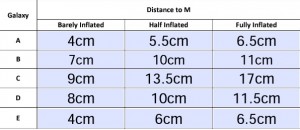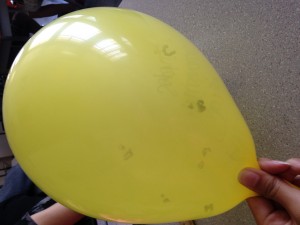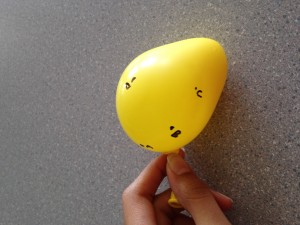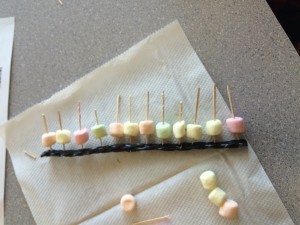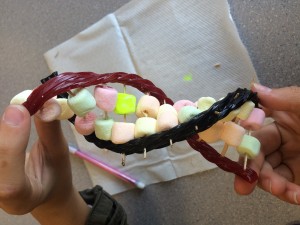Archive of ‘Science 9’ category
Humans In Space
Station one
1. The three types of space probes are interplanetary probes; which fly by celestial bodies, orbiters; which are placed in orbit around a celestial body, and landers; which land on the surface of celestial body.
2. The three milestones I found interesting about space exploration are: 1: October 4, 1957 the first artificial satellite, I think this is important because it is the first one on the timeline (marks the start of our technology advancement used for the space beyond our atmosphere) 2: July 20, 1969, the date of the first manned moon landing; I choose this one as my second because it was the first time man would ever step on a celestial object in outer space, and as Neil Armstrong once said “that’s one small step for man, one giant leap for mankind.” For my third choice I chose a more recent milestone: January 14, 2005 The first landing on another worlds moon because it shows how far we have come since the first advancement in space technology, and how 36 years ago it was such a great achievement to land on our own moon but now we have come so far as to be able to land a Huygens probe on another planets moon.
Section two
1. A: because your ears spa left your body when you are motionless or not or sitting, standing, etc. doesn’t really work in space, so when you do get back to earth it will change back and you will feel motion way more sensitively causing you to feel like you are spinning. B: as you are in space your body works less because of the gravitational pull being gone. Since you are not using your muscles and bones as much they will start to break down because they need to be used and kept up with. C: Since earth has a downward pull (gravity) it allows for your body fluids to circulate to your legs easily, but without the pull they float and eventually move towards your head. With that your head will contain a lot of the fluids that were once in the bottom of your body. D: Earths atmosphere protects humans from the high energy radiation that comes off of the sun, but when you are in space you don’t have that, leaving the astronauts with higher risks for cancer, and more long term health issues.
2.https://www.youtube.com/watch?v=b0_kTQHQwGE
Section three
1.For my Canadian Astronaut I chose Chris Hadfield. Chris was born August 29, 1959 in Sarnia, a city in Southwestern Ontario, he was raised in a corn farm and loved flying at a young age, as he was an air cadet. Chris has three children with his wife Helene in Milton Ontario. One mission Chris went on was called the STS-100 Flight 6A in April 2001. He delivered and installed (with the the rest of the crew) Canadaarm2 a robotic arm, and a resupply module named Raffaello. He would become the first Canadian to ever float freely in space.
2. I chose the future NASA mission of Mars 2020, as I find it really interesting. It is supposed to launch in 2020 and using a rover to ultimately get to Mars. The objective is to learn more about the planet and its terrain, it’s habitability to see if humans would be able to live their. The rover will collect samples that will potentially be brought back to be observed and tested.
Expanding Universe
1.
In this lab We used a used a balloon to model the expansion of the universe and how the galaxies within it spread. We labelled the neck of the balloon m (for Milky Way Galaxy) and the rest of the “galaxies” letters a to e, after blowing the ballon to three different sizes and measuring the distance between we could observe our results and look for a pattern that relates to space.
2.
In this lab the balloon represented the universe and showed how it expanded when blown into, and the dots would represent the galaxies within the “universe” and how they moved as the Galaxy expanded.
3.
Some trends in expansion distance I noticed is that the “galaxies” furthest away from M would move the furthest amount of distance from it. And that as the universe grows so does the space within it.
4.
I think this activity allowed for me to better understand how the universe works and how its contents expand with it. Some things I’m still curious about is, how the first thing was made (in the universe) if it was the first thing ever made, there is a lot of questions I have about this topic but This one I chose because it would answer a lot of the other ones.
The Life of a Genetic Mutation: Canavan Disease
DNA Blog
How are chromosomes, DNA, and genes related to one another?
Chromosomes, DNA, and genes are all related to one another because they all relate to your genetic makeup. They all provide input on different things to make you unique and who you are. Genes from your parents are combines to make DNA and your DNA is in your chromosomes. To make yourself who you are you need all of the above, and that’s how they are related.
Explain what these following candies represent: red licorice, black licorice, marshmallows (yellow, orange, pink, green), toothpicks
The red licorice and black licorice represented the backbone of the DNA, and the marshmallows represented the parts that compose base pairs, Adenine and Thymine, and Guanine and Cytosine. The toothpicks represent the bonds between the base pairs. Together it all created a “DNA” strand.
Did this activity help you understand the structure of DNA? Explain your answer.
Yes, this activity helped me to understand the structure of DNA better. It gave me a better visual of how the DNA is built, and how it works. It really made me understand the parts, and the base pairs, A only goes with T, and G with C.
Two Types of Charge Lab
In this lab we used vinyl and acetate, we observed how they reacted when being charged with static electricity. Vinyl carries a negative charged when being rubbed with wool, and acetate carries a positive charge when being rubbed with cotton. When two positively charged objects are close together causes a repel away from each other. When two negatives are close together they stay neutral and don’t move. When their is a negative and a positive they attract.
When a neutral object is close to a charged object it causes an attraction. The charged balloon attracted the neutral meter stick.
Matter Matters Science 9
Science 9 oobleck lab
1.)The properties of chemical A and B:
Chemical A was a powdery substance, a solid but very soft to the touch. It was a light beige with. And reactive to water (thats what is mixed with to make oobleck). Chemical B was a transparent liquid with no scent. It was thin and not very dense.
2.)The properties and behaviour of oobleck: oobleck was dense and felt like a wet powder, almost like a clay, but when u would pick it up it would turn into a liquid like the thickness of paint. It would be a solid until you applied heat (with your hand) or picked it up.
3.) I think oobleck is both a solid and liquid. The way it reacts to how you touch the substance performs as both a liquid and a solid. When you touch it slowly your hands move through as if it is water. This is because the cornstarch particles have enough time to react to the motion and move out of the way. If you quickly tap the oobleck though, it feels like a solid. Oobleck is actually considered a non-Newtonian fluid.
4.) This lab helped me understand the changes of state. Example; when you are moving the Oobleck quickly in your hands it becomes a solid. But when you slowly touch it it acts as a liquid.
